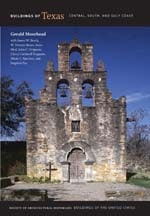Blessing was platted in 1907 by Matagorda County ranchers Jonathan E. Pierce and his son Abel B. Pierce. In 1903, Pierce granted right-of-way through his ranch, El Rancho Grande de Trespalacios, for the construction of the New York, Texas and Mexican Railway (NYT&M) line to Palacios. In 1905 he granted right-of-way for the construction of the St. Louis, Brownsville and Mexico Railway. Where they crossed, the Blessing townsite was platted. The popular story is that J. E. Pierce wanted to name the NYT&M train stop Thank God but the U.S. Post Office balked, so he substituted Blessing.
J. E. Pierce was the younger, less colorful brother of Shanghai Pierce. He came to Indianola from Little Compton, Rhode Island, in 1860 and was a partner in the A. H. and J. E. Pierce land and cattle company at El Rancho Grande from 1871 until the brothers divided their assets in 1895. J. E. Pierce's town has proved more durable than his brother's town of Pierce. The preservation of major public and industrial structures in Blessing is due especially to the commitment of Pierce's grandson Abel B. Pierce Jr., a Houston architect and cofounder of the firm of George Pierce–Abel B. Pierce (now Pierce Goodwin Alexander and Linville), who retired to his childhood home in Blessing in 1969 and lived there until his death in 2003. Houston architect Grace Pierce is another descendant of J. E. Pierce.
Writing Credits
If SAH Archipedia has been useful to you, please consider supporting it.
SAH Archipedia tells the story of the United States through its buildings, landscapes, and cities. This freely available resource empowers the public with authoritative knowledge that deepens their understanding and appreciation of the built environment. But the Society of Architectural Historians, which created SAH Archipedia with University of Virginia Press, needs your support to maintain the high-caliber research, writing, photography, cartography, editing, design, and programming that make SAH Archipedia a trusted online resource available to all who value the history of place, heritage tourism, and learning.

